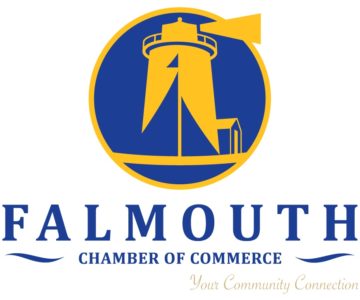You don’t have to be an investigative reporter to see that newspapers, across the country, are in trouble. All too frequently, we hear reports of papers closing, newsrooms slashed and we see the result in the thinning pages of many local and weekly newspapers.
The Internet has decimated ad revenue and consolidation funded by debt has led to huge cuts in newsroom staffs, greatly reducing local news coverage. The result, according to a recent report by the University of North Carolina’s Huffman School of Journalism and the Media, is the loss of nearly 1,800 local newspapers since 2004.
The loss and diminution of local newspapers is a concern because local newspapers help informed citizens play active roles in civic life and serve as watchdogs on town halls.
According to a recent report by the Brookings Institution, “Local Journalism in Crisis, Why America Must Revive its Local Newsrooms,” the loss of newspapers across the country has resulted in hundreds of “news deserts.”
Says the report, “the traditional business model that once supported local newspapers – relying on print subscribers and advertising to generate revenue – has become difficult to sustain as the audience for local news continues to shrink and advertising dollars disappear.”
The report says that between 2008 and 2018, advertising revenue dropped 68 percent. Digital advertising for local papers has not offset losses, and giants like Google and Facebook take the lion’s share of local advertising, according to the report.
To solve the problem, the Brookings Institution report recommends public funding for local journalism in the form of tax deductions for subscriptions, tax offsets for reporting expenses, encouraging nonprofit newspapers through changes to the tax code, and a public fund for local journalism to fund fellowships and experimental new models.
The report also suggests steps that could be taken, such as changes to anti-trust laws and the tax code, to prevent large online platforms from undercutting the business model for local news sources.
The dynamics that have impacted news gathering at a national level are the same on Cape Cod where the local daily and many weeklies have suffered heavy cuts.
The owner of many Cape weeklies and the daily Cape Cod Times is Gatehouse Media, now called Gannett after merging with that company in November, which is now the largest newspaper chain in the country. But according to the UNC analysis, while the company’s revenue grows through acquisitions, operating margins and revenue at existing papers has fallen. The company has tried to offset this decline by investing in digital services and financial services. Whether this strategy succeeds is yet to be seen, but leafing through the pages of a former Gatehouse weekly it’s clear that local coverage has suffered.
Published circulation reports for Gatehouse weeklies on the Cape show that readership is declining. As the Cape demographic ages, that trend will likely continue as the subscriptions of older readers, who make up a large percentage of newspaper subscribers on the Cape, are not renewed.
A New Model
Despite the woes of Gatehouse/Gannett papers, alternative models are emerging, a few strong independent newspapers are continuing to serve their vital mission and public radio has expanded its role in reporting local news.
The loss of classified advertising and the availability of information on the Internet doesn’t mean there is no longer a successful model for local newspapers, say Teresa Parker and Ed Miller, founders of the Provincetown Independent, which began operations in October, and serves the towns of Provincetown, Truro, Wellfleet and Eastham.
After facing severe layoffs and outsourcing at the Provincetown Banner, a Gatehouse publication, Miller, who was the paper’s associate editor, quit.
“What had been a really fine newspaper was being hollowed out,” he laments.
As their model, Miller and Parker designed a hybrid organization, which consists of both a business and a nonprofit organization. The nonprofit performs a public service by nurturing aspiring journalists and funding more in-depth research and reporting. It may also fund a spring conference on photo journalism. Stories written through the nonprofit entity are available for free on the website, and aren’t protected by the pay-wall that restricts the paper’s other stories.
Having started a local paper in Harvard, Mass. in the early 1970s, Miller says, “it was clear to me that this community could support a local newspaper. People really love local newspapers that do a decent job and are open to listening to the different voices in the community.”
A locally-owned and operated newspaper can still make sense, as long as profit expectations are in line with what one would expect from a small business, insists Miller
What isn’t sustainable, say Miller and Parker, is the widespread model of corporations borrowing money to build large newspaper chains, and then eliminating staff and cutting quality in order to service debt and squeeze out traditional 10 percent profit margins. Such a model, they say, results in a decline in news coverage, mass lay-offs, loss of readers, outsourcing of production, further consolidation and… eventual closure.
“The newspaper industry isn’t being destroyed by the Internet,” says Miller, “but by corporate greed.”
The Provincetown Independent now has six full-time employees, four in editorial and two on the business side. They also rely on 20 to 25 part-time and freelance staff members. Their business plans calls for 10 full-time employees by the end of year one.
“I have no doubt that we will go to 10 full time because we’re all working too hard!” says Miller.
So far, says Parker, donations to the paper’s nonprofit, The Local Journalism Project, have been very encouraging.
“We’re able to cover stories that we wouldn’t otherwise devote the resources to, ones that need a lot of research,” explains Parker. Those stories might focus on mental health, the effects of climate change on downtown Provincetown and the aging LGBTQ population of the Outer Cape.
The Provincetown Independent is relying on investors to fund operations, and is about half-way to being fully funded. Until now, investors have been limited to those making minimum investments of $10,000, but there may be a direct public offering for small non-accredited investors. The Berkeley Side newspaper, notes Miller, raised about $1 million that way. When the paper reaches a 6 percent level of profitability, investors will receive dividends.
“We’re trying to build a business that has a sustainable model. This can be a successful business as long as we’re willing to be a small business,” adds Parker.
So far, says Miller, the Independent’s circulation targets have been exceeded. The paper now has almost 1,000 subscribers. The goal is to have 3,000 by the end of the first year.
Overall, Miller says they are ahead of projections in their business plan, which calls for the paper to reach break-even in year 4 and profitability in year 5.
Many nonprofit newspapers are online only, but Miller and Parker felt it was important to have a print edition, that it would appeal to the Outer Cape community of artists and writers. In addition, digital-only platforms face the challenge of low advertising revenue, which traditionally made up about 80 percent of a newspaper’s revenue. Newspapers have been unable to offset print ad revenue with digital ad revenue. (Digital revenue at Gannett is, according the report by UNC, anemic.) And then there’s Google and Facebook, which take the lion’s share of ad dollars.
The Independent’s plan encourages print subscriptions, which are less expensive than online-only, because it supports the value for their advertisers. As circulation builds, they hope to see advertising grow, especially with real estate ads.
Both the Falmouth Enterprise and Provincetown Independent charge less for their print and digital combined subscriptions. The Independent charges subscribers $60 per year for a print and digital editions, or $75 per year for digital only. Similarly, a digital subscription to the Falmouth Enterprise will cost $60 per year, while the print and digital editions together cost just $52.
According to the Independent, this paradoxical pricing is because digital only is actually more expensive for the newspaper. The cost of researching, reporting and editing is the same for print as digital, yet print editions generate advertising revenue, which digital does not.
Other independent local papers on the Cape also continue to thrive. The Cape Cod Chronicle closely covers the towns of Chatham, Harwich and Orleans, and the Enterprise keeps a close eye on Falmouth, Sandwich, Mashpee and Bourne.
Public Radio To The Rescue?
While the former Gatehouse (now Gannett) newsrooms on the Cape are largely deserted, the WCAI National Public Radio newsroom, by comparison, is a beehive of activity. Located in a tidy, light-filled restored three-story 19th century ship’s chandlery on Woods Hole’s Water Street, desks occupy every available space.
Since Mindy Todd, managing director of editorial and host of “The Point” joined the station 19 years ago, the staff has grown from five people to about a dozen.
The growth in public radio stations is a nation-wide trend. According to Todd, there are now about 4,000 people employed in NPR affiliated radio stations. “That’s bigger than any other news organization,” she says.
According to Steve Junker, WCAI’s managing editor of news, the newsroom cuts that have resulted from leveraged buy-outs and the creation of news conglomerates have also impacted radio stations, which rely on local newspapers to be their eyes and ears.
While the station still has strong relationships with reporters and papers like the Cape Cod Times, the Enterprise, the Cape Cod Chronicle and papers on the island which report on air, there are holes in coverage in some towns. “They’re not covering meetings, and that’s a concern,” says Junker.
“Certainly over the years newsrooms have shrunk, people leave and they don’t replace them,” says Todd. “It’s hard to stay afloat.”
“For the last 25 years we’ve had a purposeful goal to be a local news station,” says Junker. “That’s what people want.”
Rather than rely on AP copy and rewrites of local press, the station has hired beat reporters, like environmental reporter Eve Zuckoff.
“We made it a priority,” says Todd.
Another of the station’s newer employees is John Basile, a former radio broadcaster who spent 24 years as editor of Gatehouse’s The Register. He’s a now a reporter and host of “All Things Considered.”.
Noting how the newsroom was deserted when he left the Register, Basile finds the return to a vibrant workplace to be a tonic.
“It’s been an adjustment actually working as part of a team again. Working collaboratively, talking over a story, is great,” he says.
With local coverage by newspapers, on the whole, less robust than in years past, WCAI places greater emphasis on finding their own local stories, and often breaking local news. But a regional radio station still can’t cover towns the way a local paper does, so for the most part, WCAI pursues important issues that connect the region, and that risk being under-examined, says Todd. Issues like wastewater, education, affordable housing, and the opioid crisis.
“It seems wonky, but if you think of how it affects each of us, we think it’s important to check in on it,” she adds.
New software also allows WCAI to more readily share stories with the Boston station, WGBH. “It makes our little station have the power of a big station,” says Junker. The sharing runs two ways. Stories produced by WCAI, such as about Cape Cod’s white shark population, often get picked up across the country. Other national stories that originated in Woods Hole include stories on wind power, cranberries, Cape Cod’s rat population, and a feature on a Chow Mein sandwich restaurant.
The Internet also allows WCAI to reach a wide audience. “People from all over the world listen to WCAI. They have a connection to this place,” says Junker.
Adds Todd, “People tell us, ‘I live in New York, and I love the local news, and the fact that you have the bird report.’”






















